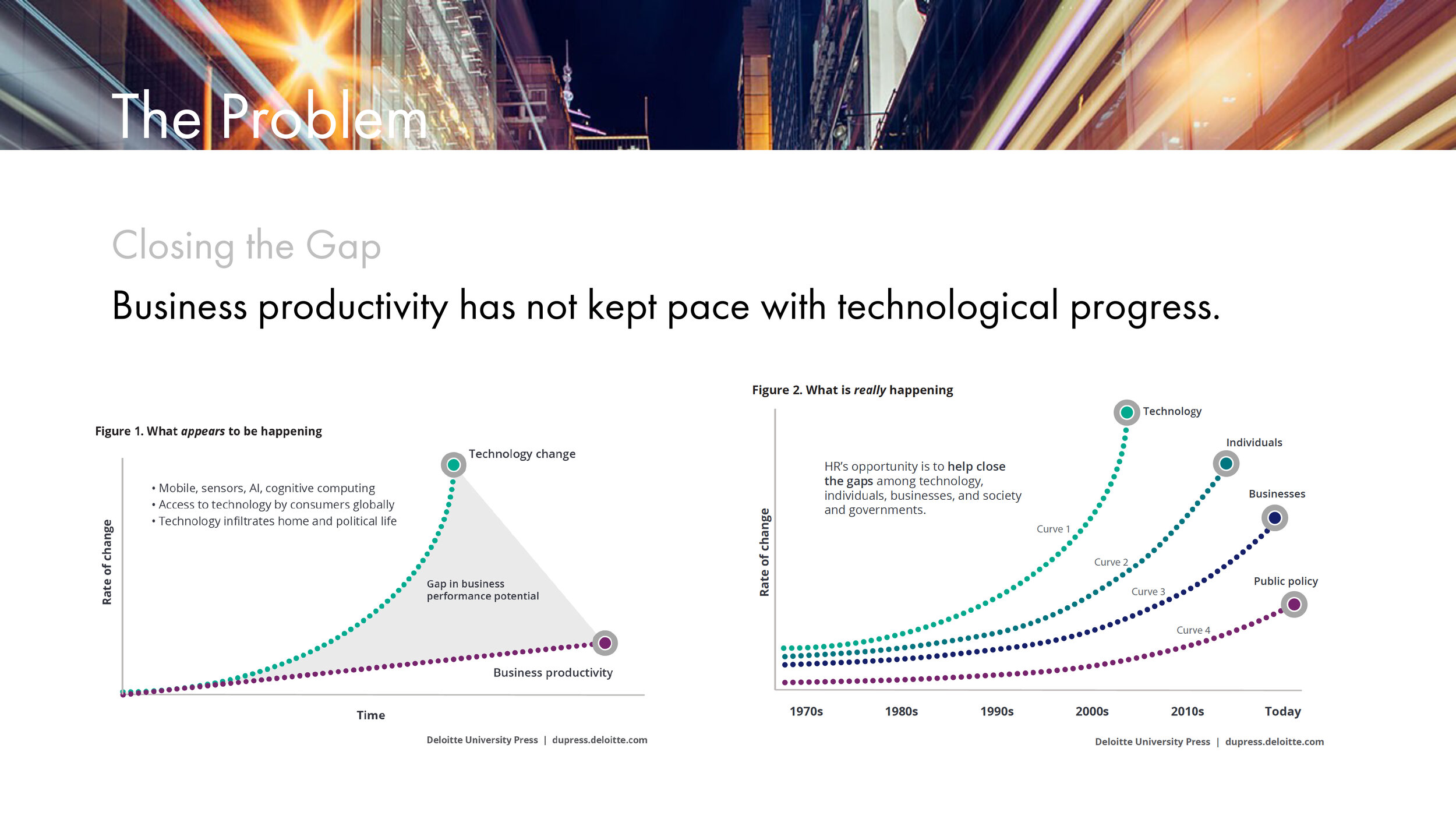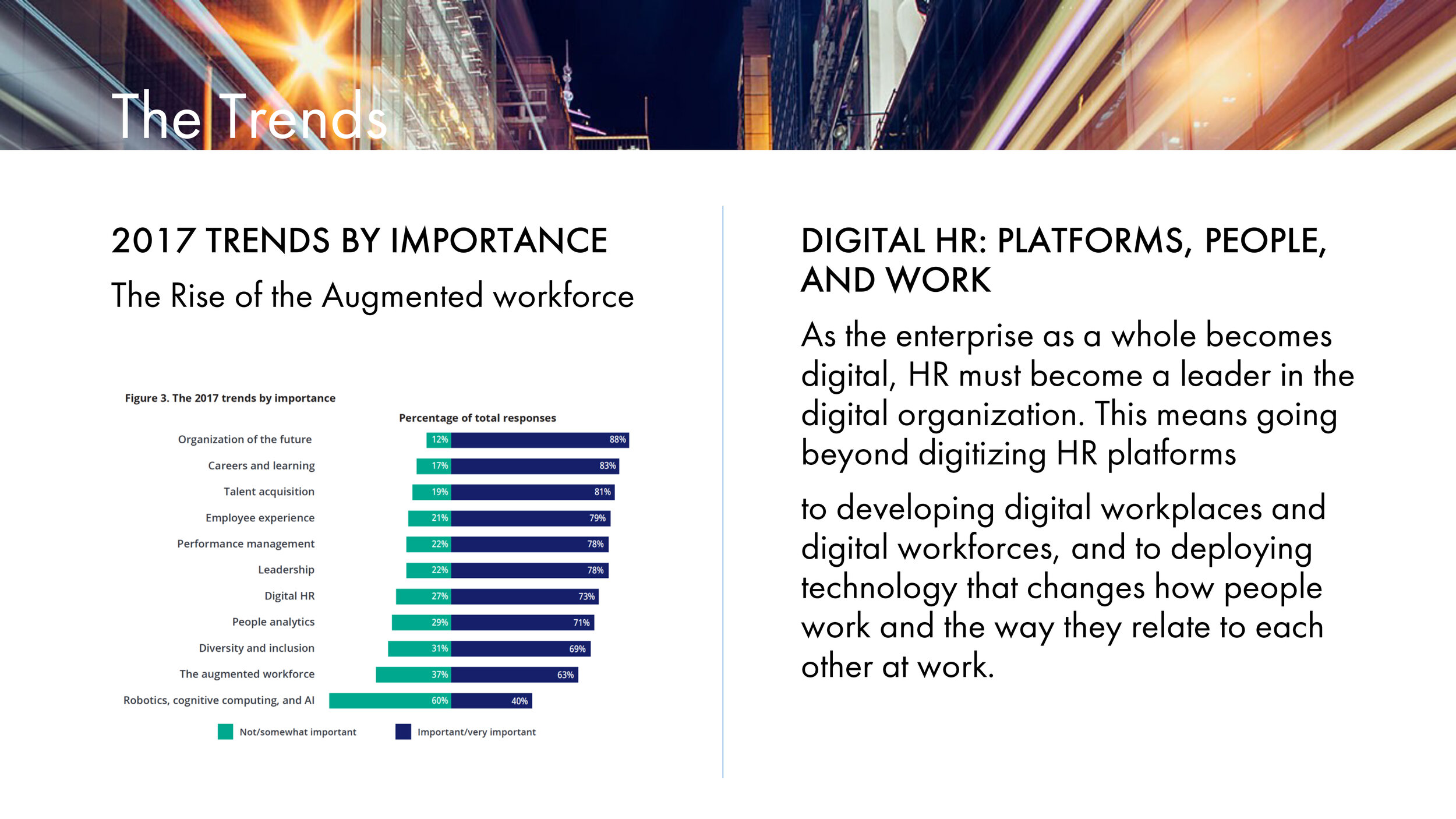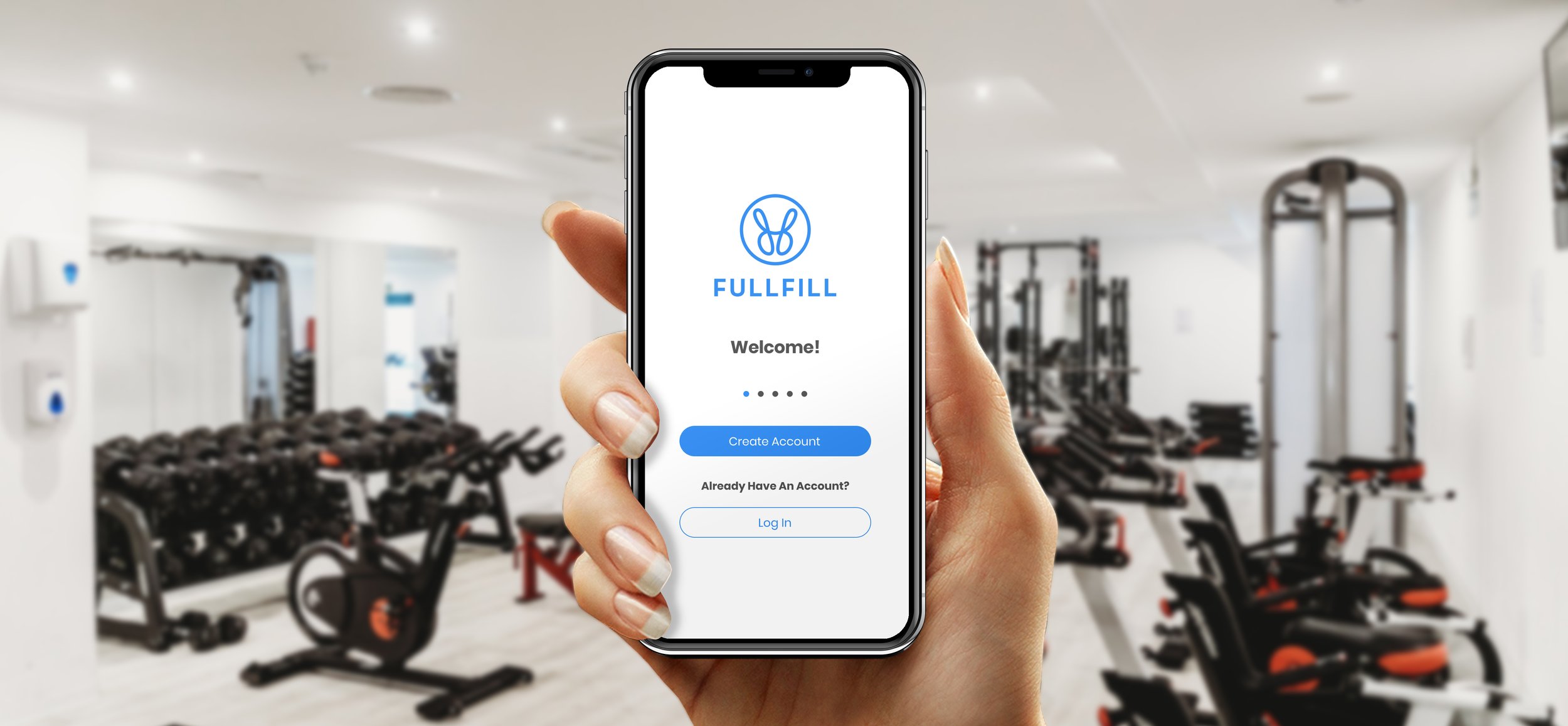SmartDesk
The Problem
Closing the Gap: Business productivity has not kept pace with technological progress.
Understanding the growing gaps among technology, individuals, businesses, and public policy, is now essential to effectively navigating the world of human capital. Within organizations, HR has a unique role to play: It can help leaders adapt to technology, help people adapt to new models of work and careers, and help the company as a whole adapt to and encourage changes in society, regulation, and public policy.
How do we close this gap and increase business productivity?
How do we cultivate, harness and SAVE the DNA of the business?
The Opportunity
SmartDesk came to CurtDoty.co to help define, articulate and create the brand around this innovative technology. Through some research and much discussion with the creator/CEO, a positioning was established to give this new product a reason to exist.
The Future of Work
THE AUGMENTED WORKFORCE - Paradigm-shifting forces such as cognitive technologies and the open talent economy are reshaping the future workforce, driving many organizations to reconsider how they design jobs, organize work, and plan for future growth.
The Solution
The Insight
“Augmentation means starting with what minds and machines do individually today and figuring how that work could be deepened rather than diminished by a collaboration between the two.”
-Tom Davenport and Julia Kirby in Only Humans Need Apply
To expand our vision of the workforce; think about jobs in the context of tasks that can be automated.
How can we redesign the workplace to be more digital in nature, open, and collaborative, yet provide opportunities for development, growth, and focus time?
RETHINKING WORK FOR THE AUGMENTED WORKFORCE
The shift from full-time employees to an augmented workforce (augmented by both technology and crowds) is one of the more challenging of the human capital trends on the horizon. Given the scope and scale of coming changes to work, workforces, and workplaces, it is critical to have an enterprise “future of work” or “augmented workforce” roadmap combining business, HR, IT, procurement, and finance. This plan should include an actionable view of talent, training, communication, leadership, culture, and organizational impacts.
Potential
AI’s $37 billion market is creating new industries.
THE AUGMENTED WORKFORCE
Robotics, AI, sensors, and cognitive computing have gone mainstream, along with the open talent economy. Companies can no longer consider their workforce to be only the employees on their balance sheet, but must include freelancers, “gig economy” workers, and crowds. These on- and off-balance sheet workers are being augmented with machines and software. Together, these trends will result in the redesign of almost every job, as well as a new way of thinking about workforce planning and the nature of work. Change is already taking place: In this year’s survey, 41 percent of our respondents have either fully implemented or made significant process in adopting cognitive and AI technologies, and another 35 percent report pilot programs.
SOURCE: Rewriting the rules for the digital age,2017 Deloitte Global Human Capital Trends
The Brand
The Positioning
HOW MACHINE LEARNING INFLUENCES YOUR PRODUCTIVITY
Long before machines replace us humans, they will be helping us to make smart decisions so we can become more productive — autonomous machines be damned. This use of technology is called “intelligence augmentation” and because of its imminent and extensive impact, it deserves a closer look.
Imagine a new kind of intelligence that has nothing artificial about it. It augments our capacity to understand what is happening in the complex world around us.
While artificial intelligence can improve efficiency by replacing humans for focused tasks, it is in the application of machine intelligence to augment human decision-making that the real increase in business productivity will occur. Understanding the roles machine learning can play is the key to maximizing both artificial and human intelligence in the enterprise.
The Targets
Organizations face a radically shifting context for the workforce, the workplace, and the world of work.
HR is being pushed to take on a larger role in helping organizations to “be digital,” not just “do digital.” The process starts with digital transformation in HR, as HR leaders explore new technologies, platforms, and ways of working. HR leaders should focus on defining the difference between essential human skills, such as creative and ethical thinking, and nonessential tasks, which can be managed by machines.
DIGITAL HR: PLATFORMS, PEOPLE, AND WORK
As the enterprise as a whole becomes digital, HR must become a leader in the digital organization. This means going beyond digitizing HR platforms
to developing digital workplaces and digital workforces, and to deploying technology that changes how people work and the way they relate to each other at work.
“Some people call this artificial intelligence, but the reality is this technology will enhance us. So instead of artificial intelligence, I think we'll augment our intelligence.”
—Ginni Rometty
The Vision
SmartDesk is the next generation UI and technology that harnesses the power of YOU.
The Mission
The tool to build the 21st-century digital organization, workforce, and workplace.
Communication
The Investors Deck
The Website
more startup case studies
ADDENDUM
If you need this type of consulting for your Startup, contact my paid consultancy. Click Here.
Looking to learn how to PIVOT your company for growth? Click Here.

















































